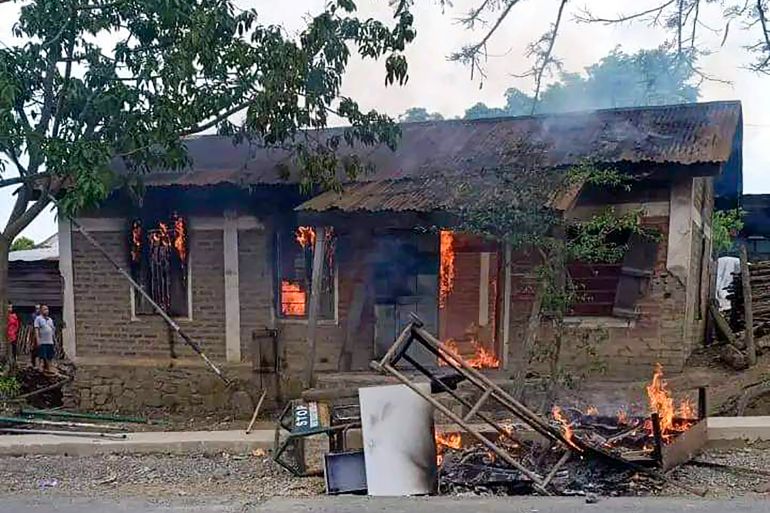DM Monitoring
MANIPUR, India: As so often in India, the violence erupted suddenly and spread like wildfire. The small state of Manipur in the northeast of the country, on the Burmese border, which has 3.5 million inhabitants, has been plagued by deadly inter-ethnic clashes since May 3. Sixty people died, according to the local government, 1,700 homes were burnt down, along with temples, churches and vehicles, and more than 35,000 were reportedly displaced and housed in relief camps.
Thousands of soldiers were deployed, with orders to shoot on sight if necessary, and a curfew was declared. Internet has been suspended.
The conflict opposes the Meiteis, the dominant ethnic group which represents 53% of the population of Manipur, mainly Hindu, settled in the fertile valley of Imphal, located in the center of the State, with the Kukis, of the Chin tribes of the hills, of Mainly Christian denomination. For years, the Meiteis have been clamoring to be included in the official list of Scheduled Tribes.
This designation, which benefits the two main tribes of Manipur, the Nagas and the Kukis, about 40% of the population, is reserved for ethnic groups considered disadvantaged and isolated. It confers job quotas in the administration and places in public universities.
The economic stakes are high, because the states of northeastern India are lagging behind in development, and public posts are the main source of employment.
On March 27, the Manipur High Court ruled that the Meiteis’ request was justified, and gave the Manipur government four weeks to send its recommendations to the central government. This decision angered the indigenous communities.
On May 3, a student association took the lead in a “tribal solidarity march” organized in all the hill districts. The city of Churachandpur, essentially Kuki territory, was the first to catch fire, then the violence spread to the other cities.
The tribes fear that the Meiteis will take their jobs away from them and may also acquire, by achieving Scheduled Tribe status, ancestral forest lands in the hills and mountains.






